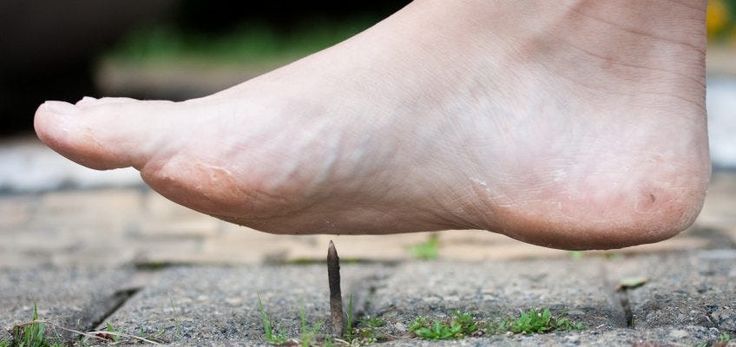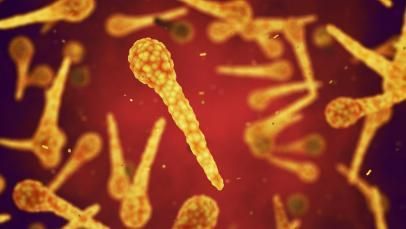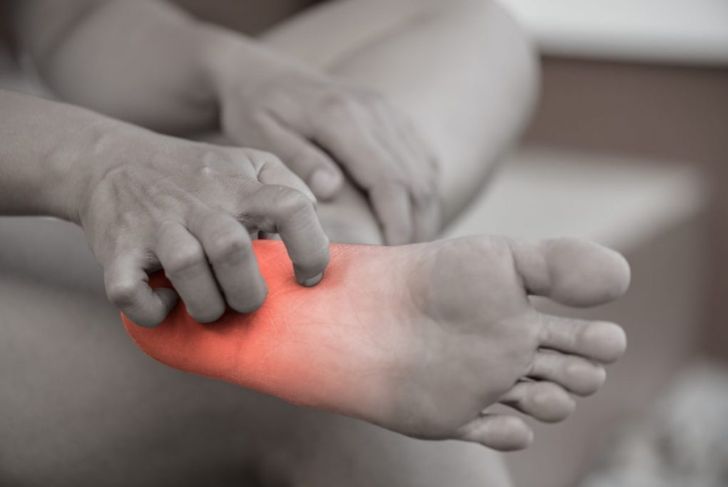Today, we know this account to be one of the first recorded cases of tetanus, and thankfully,
modern physicians are much more prepared to handle the specular infections. Unlike other common bacterial infections, like tuberculosis and strep throat, tetanus doesn't pass from person to person. Instead, the offending bacterium, known as clostridium tetany, infects the body through cuts and abrasions.
These infection sites are why tetanus is so strongly associated with rusty nails and
scrap metal, which can cause such wounds.
But the condition's connection to rust is actually much less direct. Clostridium tetany bacteria are often found in soil, manure, and dead leaves, where they can survive for years in the form of spores, even amidst extreme heat and dryness.
These piles of organic material can sit undisturbed for long periods, potentially concealing old metal, which rests over time.
So if someone does blunder into this environment and cuts themselves, it would likely increase their odds of infection, especially since rusty metal can create jagged wounds with lots of deoxygenated dead tissue for then to latch onto.
Once in the body, the spores begin to germinate.
This process releases several toxins, including deadly tetanus toxin. Nerve endings soak up this toxin, drawing it into the brain and spinal cord, where it wreaks havoc on internarons.
Typically, these work alongside motor neurons to regulate our muscle actions, from endeavors
as complexes kicking a ball, to those as simple as breathing. But by blocking neurotransmitters released by internarons, tetanus toxin causes uncontrollable muscle contractions and spasms.
Typically, within seven to ten days of infection, patients begin experiencing general aches,
trouble swallowing, and lock jaw. The head and neck tend to show symptoms first. But as the toxin spreads, stronger muscle groups become more rigid, leading to a frightening arching of the back. Left untreated, these spasms become more extreme, eventually seizing the muscles in the windpipe and chest, leading patients to suffocate within 72 hours of symptoms appearing. Without treatment, tetanus has an extremely low rate of survival.
But fortunately, medical professionals have developed a robust plan to handle a tetanus
diagnosis. First, doctors clean the infected wound and administer antibiotics, killing the bacteria and preventing further toxin production. Then, they inject anti-toxin to neutralize any tetanus toxin still in the body that
is yet to enter the central nervous system.
Finally, patients begin a several-week period of supportive care, which can include muscle
relaxants to stop spasms and ventilators to prevent suffocation. In the days of apocrates, the only course of treatment was to wait and hope. But now, we know the best time to tackle clostridium tetany is before an infection even
takes place.
Tetanus vaccines originally developed in the early 1920s are crucial to preventing tetanus
and stopping its spread. Experts recommend a series of shots and boosters beginning at two months old and ending around age 12.
Yet, over 20,000 infants still die of tetanus every year, mostly in low and middle-income
countries where vaccine access is limited, including South Asia and Sub-Saharan Africa.
And newborn babies are especially at risk if their mothers are unvaccinated, as clostridium
tetanus can infect a newborn's umbilical stump, though vaccinating mothers during pregnancy
can help with this problem. The fact is, tetanus remains a significant threat to human health, so people should get vaccinated and take measures to prevent infection after cutting themselves, whether it's on a rusty nail or a 24-hundred-year-old ship anchor.



I did that once.
I stepped on a nail.
It went straight through the sole of my shoe and in to my foot.
I went to a clinic and got a booster shot and did not come down with tetanus.
The event was extremely painful. 😧
Lucky you. For some people the story is different